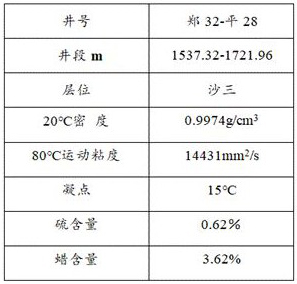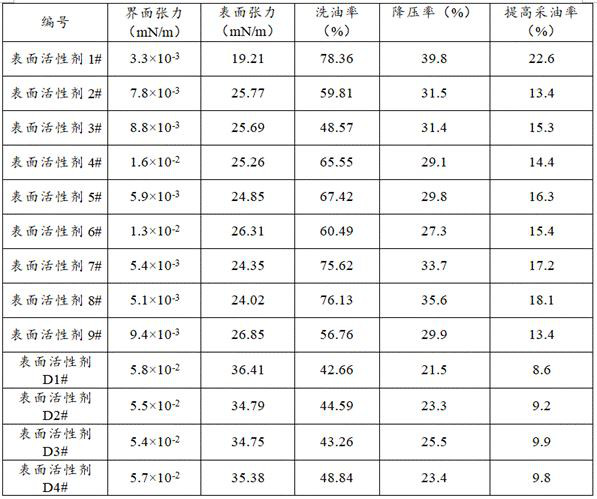Surfactant for improving water injection efficiency in low-permeability reservoirs, preparation method and application
A surfactant and low-permeability technology, applied in chemical instruments and methods, earthwork drilling, drilling compositions, etc., can solve the problems of single chemical system performance, ineffectiveness, poor imbibition, etc. Achieve good biodegradability, reduce consumption, avoid liquid crystallization and precipitation
- Summary
- Abstract
- Description
- Claims
- Application Information
AI Technical Summary
Problems solved by technology
Method used
Image
Examples
Embodiment 1
[0042] Embodiment 1 Surfactant 1#
[0043] (1) Using 26.4g of dimethyl malonate and 46.4g of N,N-dimethyl-1,4-butanediamine as raw materials, add 1.5g of sodium formate and react at 100°C for 24 hours. After the reaction is complete, add dropwise 2.5ml of acetic acid was stirred for 1 hour, cooled to obtain a light yellow solid, and dried in an oven at 105°C to obtain the crude product of bis(4-dimethylaminobutyl)malonamide; weigh 29.6g of bis(4-dimethylaminobutyl) ) crude malonamide reacted with 50.0 g of dodecane bromide at 50°C to obtain a mixture of quaternary ammonium salt type gemini surfactants containing amido groups, which was recrystallized from acetone to obtain cationic surfactant 1#.
[0044] (2) Add 40.0g of water to the reaction kettle, add 5.0g of polymer surfactant while stirring at 30-40°C, and stir for 2 hours; then add 2.0g of nonionic surfactant and 38.0g of cationic surfactant 1 #, after stirring for 1h, add 10.0g ethanol, continue to stir for 1h, after ...
Embodiment 2
[0049] Embodiment 2 Surfactant 2#
[0050] The difference between Example 2 and Example 1 is that in step (2), 40.0 g of water was added to the reaction kettle, 5.0 g of polymer surfactant was added while stirring at 30-40 °C, and stirred for 2 hours; then 5.0 g of water was added. g nonionic surfactant and 35.0g cationic surfactant 1#, after stirring for 1h, add 10.0g ethanol, continue stirring for 1h, after mixing uniformly, obtain surfactant 2#; all the other conditions are the same as in Example 1.
Embodiment 3
[0051] Embodiment 3 Surfactant 3#
[0052] The difference between Example 3 and Example 1 is: in step (2), 40.0 g of water was added to the reaction kettle, 2.0 g of polymer surfactant was added while stirring at 30-40 ° C, and stirred for 2 hours; then 5.0 g of water was added. g nonionic surfactant and 38.0g cationic surfactant 1#, after stirring for 1h, add 10.0g ethanol, continue stirring for 1h, after mixing uniformly, obtain surfactant 3#; all the other conditions are the same as in Example 1.
PUM
 Login to View More
Login to View More Abstract
Description
Claims
Application Information
 Login to View More
Login to View More - R&D
- Intellectual Property
- Life Sciences
- Materials
- Tech Scout
- Unparalleled Data Quality
- Higher Quality Content
- 60% Fewer Hallucinations
Browse by: Latest US Patents, China's latest patents, Technical Efficacy Thesaurus, Application Domain, Technology Topic, Popular Technical Reports.
© 2025 PatSnap. All rights reserved.Legal|Privacy policy|Modern Slavery Act Transparency Statement|Sitemap|About US| Contact US: help@patsnap.com



